The Bach Ma Temple: Discover Hanoi’s Spiritual Gem
Tucked in the center of Hanoi, The Bach Ma Temple is a shining tribute to the great spiritual legacy of the city. Its calm presence provides a window into Vietnam’s dynamic culture entwined with centuries-old customs. Let MOTOGO Tours explore the core of this famous site closely.
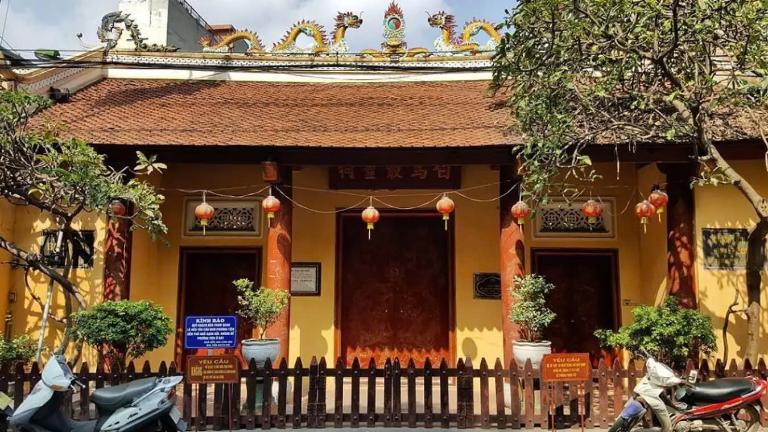
Who is worshipped at the Bach Ma Temple? The history of Bach Ma Temple in Hanoi
Built in the ninth century, Bach Ma Temple was meant for devotion and respect of the Long Do God. While traveling to quell upheavals in the tenth century, Dinh Bo Linh visited Bach Ma Temple, east of Dai La Citadel, to pray and promise divine rank to the god should his requests be granted.
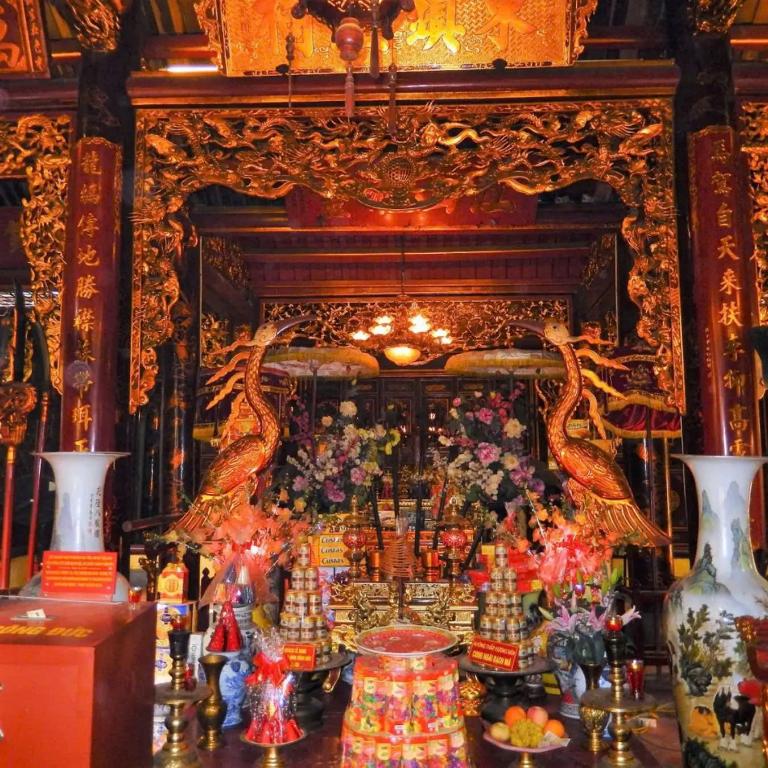
Dinh Tien Hoang, the first monarch of the Dinh dynasty dreaming of a god who named himself the White Horse God, reminded the king that he had not yet carried out the correct rites to worship the god after defeating his foes and uniting the nation. When the king woke, he gave the temple the title Ho Quoc Bao Canh Linh Thong Te The, Do Dai Thanh Hoang Linh Lang Bach Ma Dai Vuong Thuong Dang Phuc Than and ordered another temple constructed to honor the Linh Lang Bach Ma God in the hometown of his empress, Duong Thi Nguyet.

When monarch Ly Thai To relocated the capital from Hoa Lu to Thang Long, many times the fortress was erected , but it continued collapsing until the monarch prayed at the Dragon Du God and was led by a white horse from the temple. Following the trail of the horse, the king constructed the new Thang Long Citadel. The god was deified at this period as the City God of the capital.
The temple has undergone numerous modifications thus far; the two most significant ones were done under Le Hy Tong’s reign under the Chinh Hoa dynasty and in the 20th year of the Minh Mang period. Bach Ma Temple nowadays is a well-known tourist destination in Hanoi with a spiritial scenery.
Architectural Features of The Bach Ma Temple
The first thing you notice when you enter The Bach Ma Temple is its amazing architectural design, which harmonically combines delicate workmanship with traditional Vietnamese tastes. This temple is a masterwork reflecting the spiritual and cultural core of Vietnam, not only a place of prayer.
Design Elements
Characterised by wooden construction, intricate carvings, and vivid colours, The Bach Ma Temple’s architecture is a lovely rendition of Vietnamese religious architecture. The temple’s warm and inviting atmosphere comes from its main construction—wood. Typical of traditional Vietnamese temple design, curving edges on the roof represent the link between the earth and the skies.
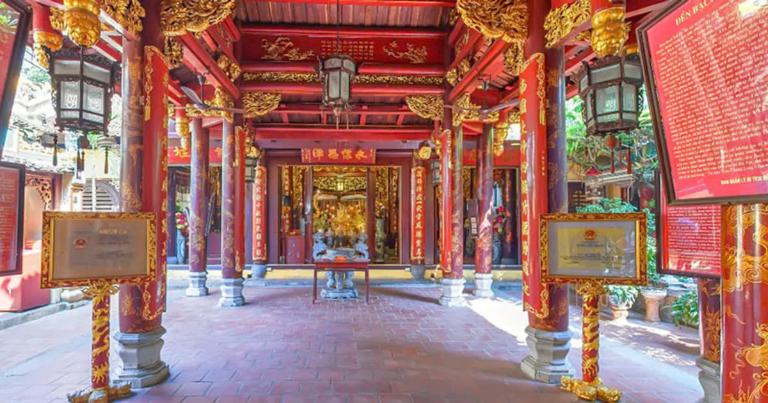
The first thing you will see as you go closer to the temple is the elaborate entrance gate, usually covered in lucky symbols and sculptures of many mythological creatures. Acting as a transitory zone, the gate invites guests to enter a realm of serenity and spirituality from behind the outside world.
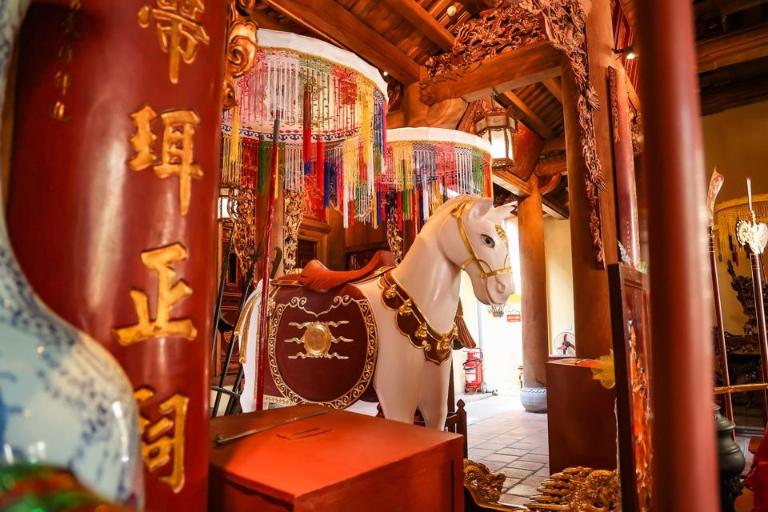
The magic really happens in the central hall within. The great altar, which features the White Horse—an important character in Vietnamese mythology— dominates the space. This painstakingly created monument highlights the extraordinary abilities of past artists. Often featuring fruit, incense, and flowers, the altar creates a vivid scene that honors the live legacy of the temple.
Symbolism in Architecture
The Bach Ma Temple boasts great symbolic meaning in every element. Using wood in building symbolizes a strong connection to nature, which is fundamental to Vietnamese spirituality, not only a design decision. Inspired by many facets of nature, including dragons, phoenixes, and lotus flowers, the wooden beams and columns are deftly carved.
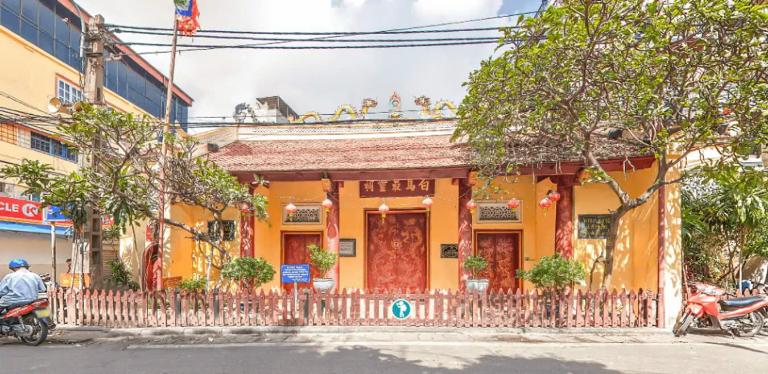
The layout of the main hall is meant to help chi—energy—flow, which is essential in traditional Vietnamese belief systems. Natural light from the open area lets the inside glow, therefore fostering a calm environment fit for meditation and contemplation. The altar is positioned strategically in line with conventional Feng Shui ideas that control energy flow and auspiciousness.
Furthermore, the roof of the temple is covered in ceramic tiles, usually in colors of green and yellow, which stand for wealth and energy. These vivid hues accentuate the natural wood tones so exquisitely, producing an aesthetically arresting surroundings that fascinates guests. Rising curvature of the roof represents the hopes and dreams of Vietnamese people toward the heavens, therefore reflecting their aspirations.
>>> Let’s explore: Quan Thanh Temple: Discover the Spiritual Heart of Hanoi
Religious Practices and Festivals
Rituals at The Bach Ma Temple
Religious activities at The Bach Ma Temple are not only a formality; they are rather ingrained in the local culture and the spiritual life of Vietnamese people. Devotees swarm the temple daily to perform customs handed down over the years. These rites are mostly meant to honor the White Horse, the deity of the temple, and ask blessings for protection, wealth, and health.
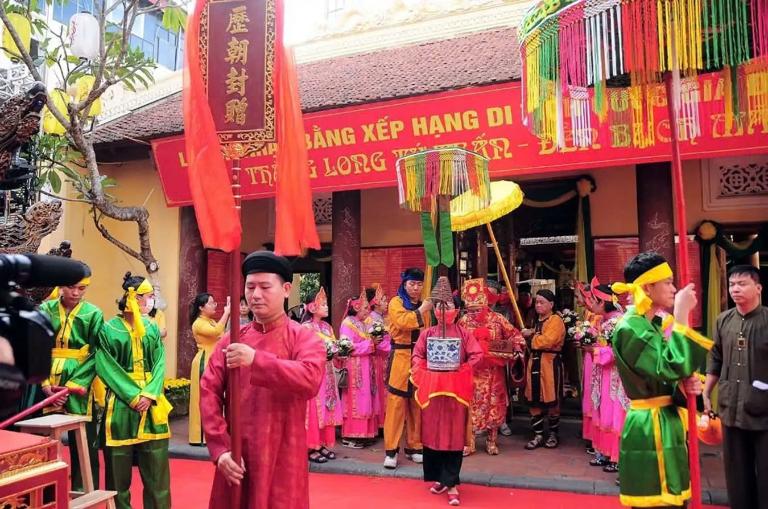
Presenting incense is one of the most often performed ceremonies. Visitors create a fragrant cloud that pervades the calm of the temple by lighting incense light sticks in assigned holders. It is said that when the incense rises, prayers and wishes to the heavens—where the gods might get them. As a token of respect and thanks, many devotees often present fruits, pastries, or even cash.
Major Festivals Celebrated
Festivals—vibrant, colorful festivities reflecting Vietnam’s rich cultural legacy—bring the heart of The Bach Ma Temple really to life. Held yearly in the second lunar month, the most prominent celebration attracts thousands of guests from all throughout the area. This celebration recognizes the White Horse as well as the resilience and togetherness of the nearby population.
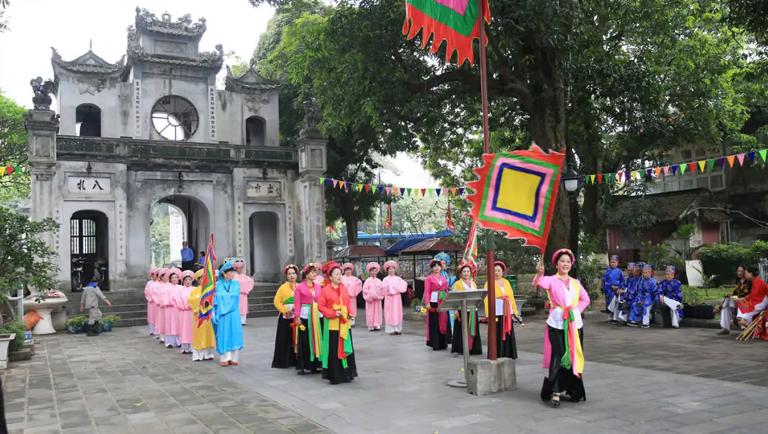
The procession, in which participants carry offerings and the White Horse monument across the streets under chanting and drumming, is one of the main elements of the celebration. This procession represents the road of faith and the group commitment of the society. Dressing in traditional attire, participants highlight the beauty of Vietnamese culture and help to authenticate the event.
Games, contests, and displays of traditional crafts among other cultural events abound throughout the festival. Apart from providing entertainment value, these events inform guests about the rich legacy and importance of The Bach Ma Temple in the society.
The Surrounding Area of Bach Ma Temple
Visiting The Bach Ma Temple is more than simply entering a historical and spiritual haven; it’s also joining a lively neighbourhood full of cultural sites, busy marketplaces, and great gastronomic adventures. Let us explore more what lies just outside the doors of the temple.
Historical Landmarks and Attractions
The Hanoi Old Quarter is notable for its abundance of historical sites. A short walk from The Bach Ma Temple will reveal the UNESCO World Heritage Site Thang Long Imperial Citadel. Standing as evidence of Vietnam’s rich legacy, this old fortification dates back to the 11th century. Insightful tales about the citadel’s influence on the country often abound on guided visits.
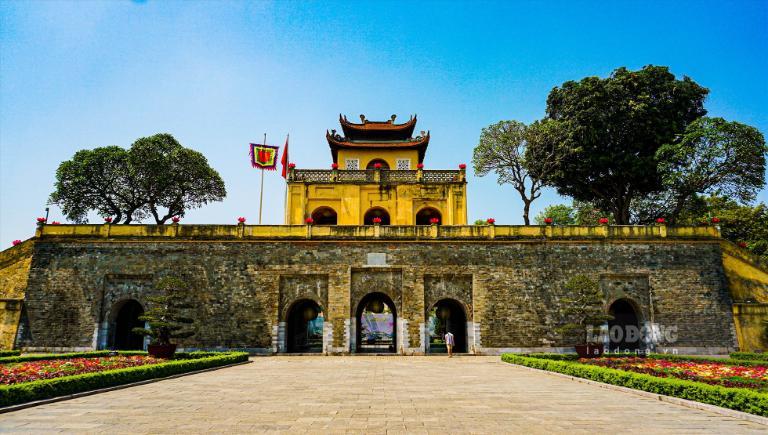
The architectural marvel evocative of Parisian architecture, the Hanoi Opera House is another neighboring treasure. Opera, ballet, and concerts among other events take place in this lovely structure. The façade of the building is worthy even if you miss a presentation. It’s the ideal place for snapping pictures and appreciating the city’s artistic vibe.
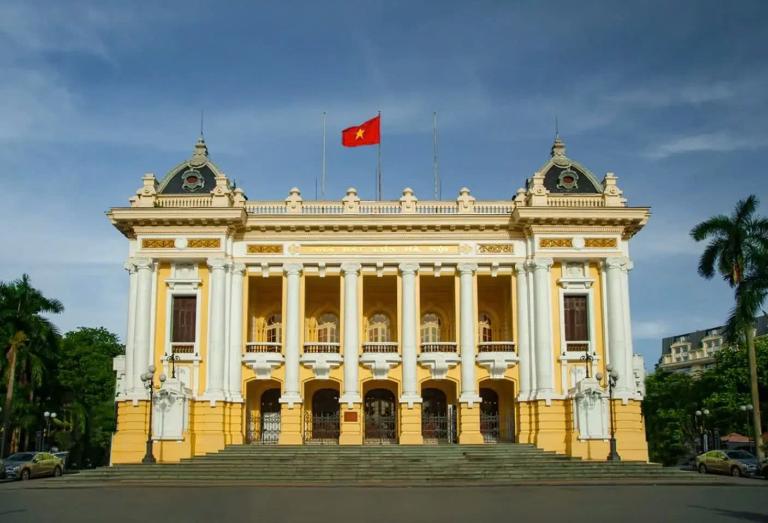
Culinary Delights
Without savoring the gastronomic delights of the Hanoi Old Quarter, no trip there is whole. Street food is well-known in this area; merchants line the streets to entice onlookers with sizzling meals and aromatic smells. Stalls offering pho, bun cha, and banh mi—each dish reflecting Vietnam’s culinary legacy—are just around the corner from The Bach Ma Temple.

Many of the surrounding cafés and restaurants provide real Vietnamese cuisine in quaint surroundings for a more laid-back eating experience. For a cup of egg coffee, a distinctive Hanoi specialty created with whipped egg yolks and sweetened condensed milk, try stopping by a neighborhood cafe. This is a great pick-me-up that fits a hectic sightseeing day.
Visiting The Bach Ma Temple
The Bach Ma Temple is strategically situated in the Old Quarter of Hanoi, so accessible to those planning a trip. The temple invites guests all year long to offer a quiet haven from the busy city streets.
Location and Accessibility
Just a short stroll from well-known sites such Hoan Kiem Lake and the Hanoi Opera House, The Bach Ma Temple is located at 76 Hang Buom Street. For everyone visiting Hanoi’s historical core, its central location makes it the perfect stop.
What to Expect on Your Visit
Arriving, you will be met with the elaborate entryway of the temple, which shapes your experience. Inside is a peaceful space with great history and artwork. The air smells of incense, therefore improving the spiritual atmosphere.
In addition, to enhance your experience, you can choose guided tours like Hanoi Motorbike Tours. They will provide a comprehensive overview of Bach Ma Temple’s history, spirit and significance.
Tips for Tourists
Given this site is holy, think about dressing respectfully when visiting. Learning some simple Vietnamese phrases would also be a great idea; residents value your efforts. Remember your camera; the complex shapes and vivid colors are what a photographer dreams about!
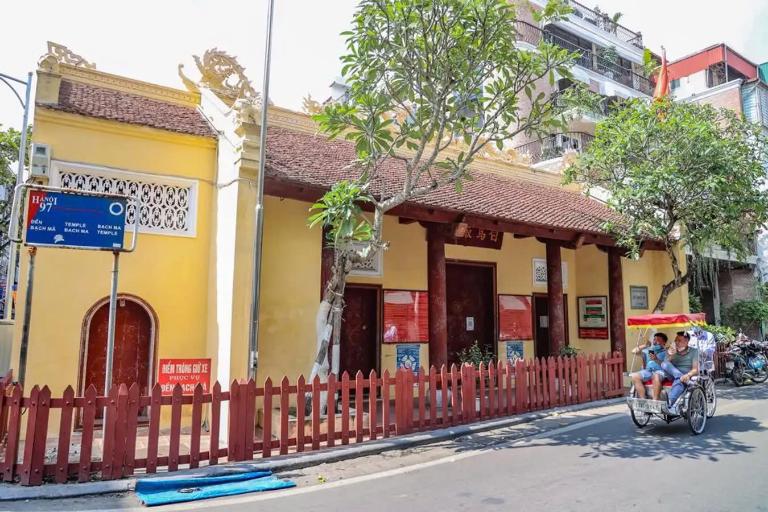
The Bach Ma Temple is a live, breathing work of Vietnamese culture and spirituality not only a historical monument. This temple provides a unique window into the heart of Hanoi whether your visit is for the architecture, the history, or the quiet environment. Don’t miss the opportunity to really experience its rich legacy and see the energetic customs still flourishing inside its boundaries.
Related Posts:









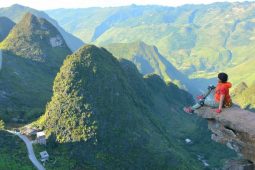

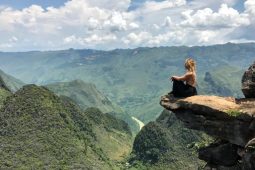
Be the first to comment!